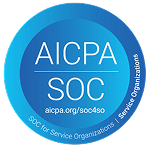FAQs
 Why is it important to compare education loans?
Why is it important to compare education loans?
Comparing education loans helps you find the best option for your budget and financial needs. Lenders offer different interest rates, repayment terms and perks, so taking the time to compare can save you money and help you make a smarter decision. For Indian students, this comparison should include both international lenders and Indian banks offering education loans.
 What are the main factors to consider when comparing education loans?
What are the main factors to consider when comparing education loans?
Look at key criteria like eligibility requirements, interest rates and type, benefits beyond funding, tailored loan amounts, fees and the lender’s reputation. Weighing these factors will help you find a loan that fits your situation. Indian students should also consider currency conversion rates and how they might affect repayment if earning in rupees after graduation.
 What’s the difference between fixed and variable interest rates?
What’s the difference between fixed and variable interest rates?
A fixed interest rate stays the same for the life of the loan, so your monthly payments are predictable and inflation proof. A variable interest rate, however, can change with market conditions – you might start with lower payments, but they could increase over time. For Indian students, fixed rates provide protection against both inflation and currency fluctuations.
 How does the length of a loan term affect repayment?
How does the length of a loan term affect repayment?
A shorter loan term means higher monthly payments, but you’ll pay less interest in the long run. A longer term gives you lower monthly payments but increases the total interest you’ll end up paying. Indian students should consider their post-graduation plans when choosing a term—if planning to return to India, factor in potential salary differences when determining affordable payment amounts.
 Are there student loans for postgraduate degrees?
Are there student loans for postgraduate degrees?
Yes! Many lenders offer doctoral or master’s program loans for Indian students. Some private lenders provide no-cosigner loans based on academic performance and future earning potential, while others may require a cosigner who’s a U.S. or Canadian resident. Universities, government programs and nonprofit organisations may also offer scholarships, grants, or assistantships to help cover tuition and living expenses. The Indian government also offers some scholarship programmes for postgraduate studies abroad. It’s always a good idea to explore all funding options before taking out a loan.
